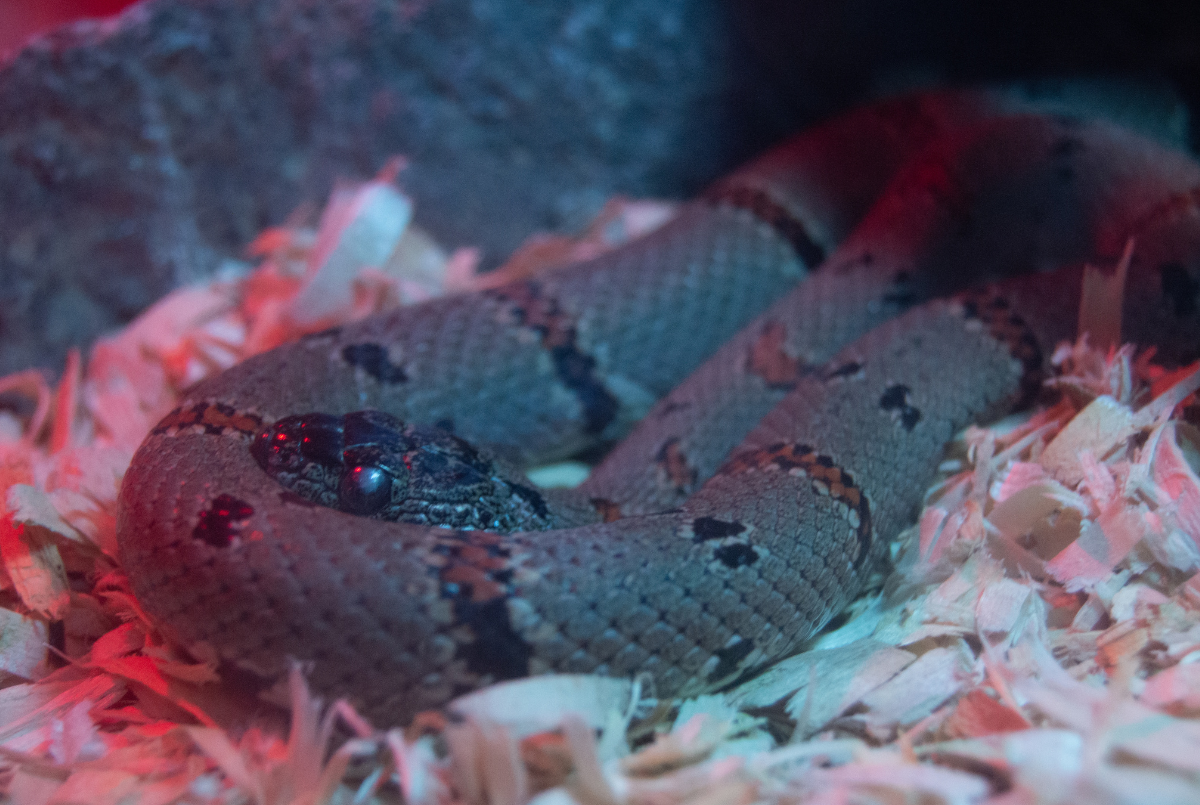Gray-Banded Kingsnake

Basic Information:
Scientific Name: Lampropeltis alterna
Habitat: The gray-banded kingsnake is native to the rocky desert hills, canyons, arroyos, limestone ridges and piles of boulders of the Chihuahuan Desert of southwestern Texas, southern New Mexico, and northern Mexico.
Diet: Gray-banded kingsnakes eat mainly lizards and rodents, though occasionally they may also take frogs, birds, bats, and other snakes.
Size: 3 to 4 feet long
Weight: 3 to 4 pounds
Lifespan: Up to 15 years
Distribution Map:
I.U.C.N. Conservation Status:

What does this mean?
Least Concern – a species determined by the International Union for Conservation of Nature (I.U.C.N.) to be pervasive, abundant, and thriving.
Our Gray-Banded Kingsnake:
Asa (Male) – Estimated Date of Birth July 2002
About Gray-Banded Kingsnakes:
A kingsnake is any snake that includes other snakes as a main part of their diet. The Gray-Banded Kingsnake is one such species that is distinct due to its scale pattern which often consists of gray scales with occasional red or orange bands (or rings) across its body. While they are not an endangered species, the hot, arid, rocky, and mountainous habitats where they live in combination to their avoidant nature makes this species difficult to spot in the wild. Additionally, their proclivity to live in areas considered unappealing or hostile for humans increases their chances of survival since a lot of their habitat has been untouched by human expansion and pollution.
Did You Know?!
- Throughout their range, gray-banded kingsnakes conduct a somewhat secretive life. They survive the extremely hot and dry climate by spending the majority of their lives underground, in the extensive networks of deep cracks and fissures beneath the land’s surface.
- A winter dormancy period is required prior to breeding. This dormancy period is often referred to as hibernation or brumation. Is is a 10-12 week period in which the room temperature is allowed to drop to a constant 55 degrees Fahrenheit. Brumation occurs from November to March with no recorded activity for these months.
- Researchers believe that under natural conditions, gray-banded kingsnakes seek out prey items by cornering them in crevices, under rocks, and in rodent burrows with limited means of escape.
- The common kingsnake is known to be immune to the venom of other snakes and to eat rattlesnakes. However, it is not necessarily immune to the venom of snakes from different localities. The “king” in the name (as with the king cobra) references its eating of other snakes.
